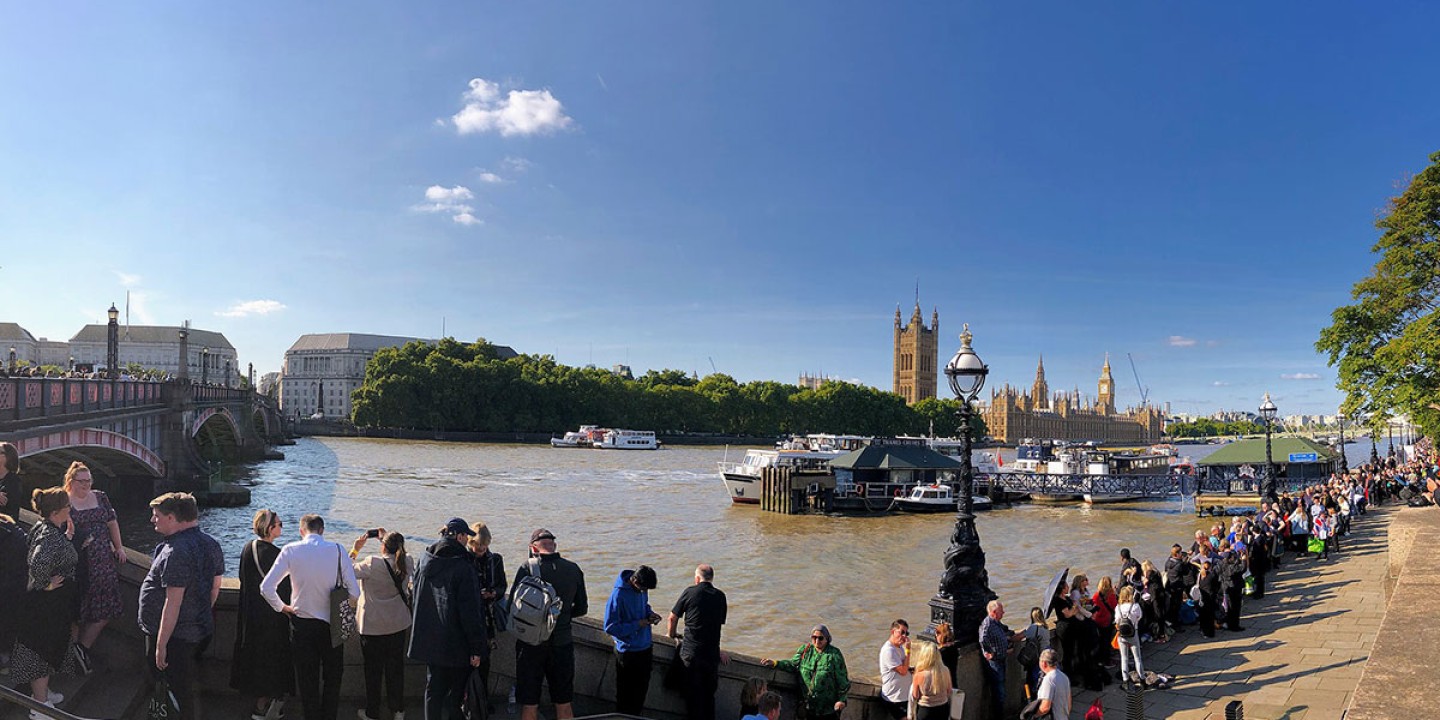We need ritual for our collective grief
Going through the motions together can move us toward healing.

At least a quarter of a million people queued up to see Queen Elizabeth’s coffin lying in state in Westminster Hall on September 19. The first person in the line—which stretched for five miles—waited for 50 hours just to pass through the hall and briefly pay her respects to a monarch she never met.
We often criticize people for going through the motions, but in this case, many went to great lengths for the opportunity to do so. Some mourned the queen as a person, expressing admiration for her lifetime commitment to an office greater than herself. Some mourned the tandem decline of the monarchy and of Britain as a global empire. Some mourned the horrors that the empire wrought on their own families and cultures around the world. Some mourned their own private griefs. Some simply wanted to be a part of history.
The atmosphere in the queue was jovial, even celebratory. But when people entered the hall, the mood became “very still and very quiet,” 15-year-old Angelica Read told the Washington Post. With “the candles and lights and guards . . . it was completely timeless and special.” Those who waited for days to enter that timeless space created by ritual may have benefited significantly from their participation.
Rituals require us to go through the motions. Even if we don’t experience emotion during the process, performing a ritual—even a silly one we invent for ourselves—before a stressful event decreases anxiety and increases confidence. Rituals performed after loss lessen the intensity of grief. And the rituals we perform with others bring us into alignment with our communities. Going through the motions together creates social harmony and a measure of collective healing. To say that the queen’s funeral brought England together is more than a cliche.
In the US, we have endured enormous loss with almost no public acknowledgment of national grief. More than a million people have died from COVID, and millions more have experienced the death of loved ones, including the rising number of children who are COVID orphans. This communal loss has hampered our abilities to cope with everyday stressors and increased our sense of alienation from each other. Declaring the pandemic over, as President Biden did recently, does not put an end date on the cumulative stress and grief we have experienced since 2020.
What would it mean for us to acknowledge such unfathomable loss with a public ritual of mourning? Not the hair-tearing and teeth-gnashing of biblical lament nor the righteous rage of protest, but a well-ordered performance of communal grief?
Research shows what happens when we don’t perform an end to our grief: we experience despair, hopelessness, and burnout. But when we participate in a ritual of mourning, we begin to close the loop. Our bodies signal to our brains that we’ve reached an ending. Moving with the queue through a quiet hall lit with candles, we make a path forward, together. Then maybe we can step out of our grief, instead of staying stuck in it.




